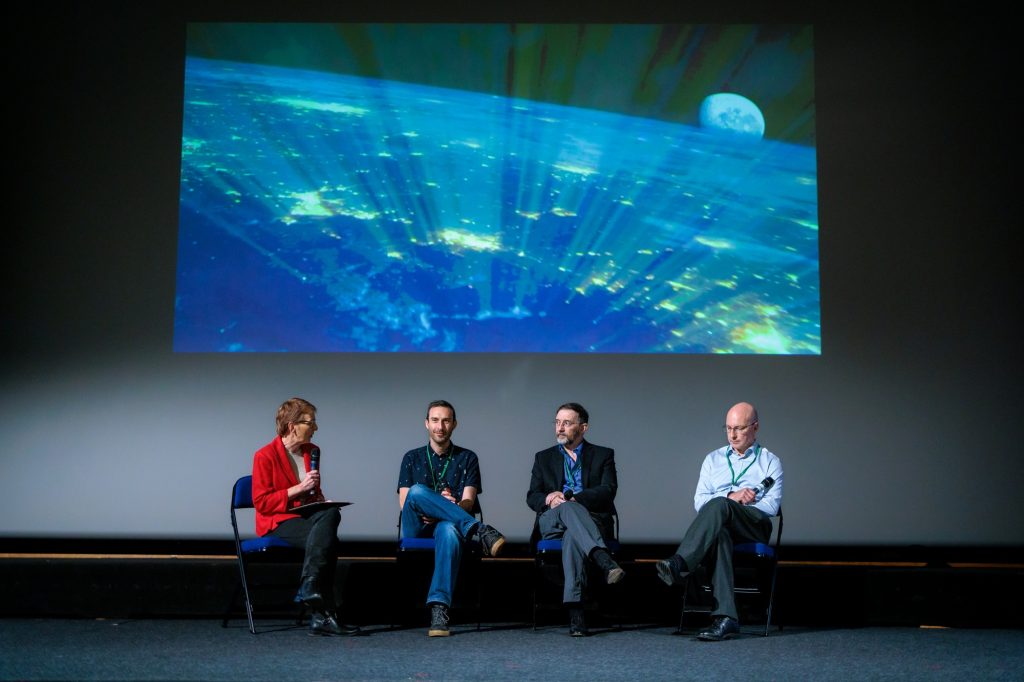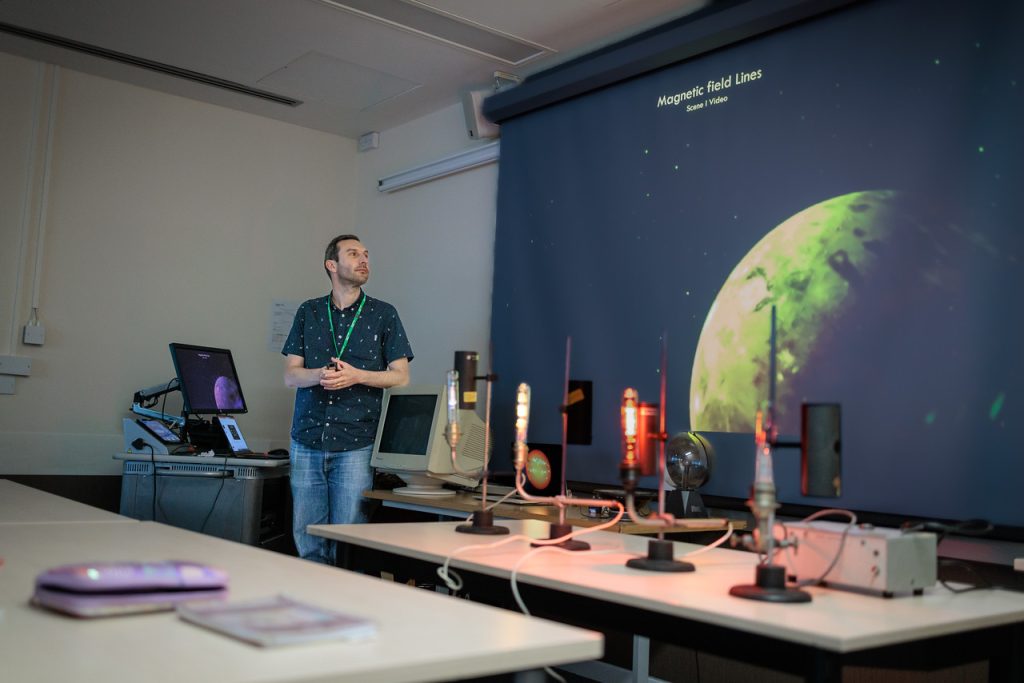Imperial is using its outreach programmes to get more young people excited about space. This blog post looks at the reach and impact of these initiatives.
The road to the stars, it turns out, begins with a postcard. But instead of the Eiffel Tower or Big Ben, the postcards depict ‘flight surgeons’ and ‘space lawyers’, and instead of inspiring wanderlust, these postcards inspire young people to imagine their futures beyond the Earth’s boundaries.

‘I’m a Space Person’ was an Imperial initiative that aimed to get young people excited about jobs in the UK’s space sector. Though it started in 2022 as part of an Undergraduate Research Opportunities Programme (UROP) project, it has since snowballed into one of the UK’s largest space outreach efforts to-date, backed by the UK Space Agency (UKSA) and with Imperial at its heart.
“One thing that people don’t realise about Imperial is that we’re the largest space university in the country,” said Dr Simon Foster, Head of Outreach at the Faculty of Natural Sciences, who has been heavily involved in the programme. Though other institutions like the University of Southampton and University of Leicester may have space-specific science degrees, the sheer number of staff and students working in the space sector at Imperial makes it a powerhouse.
From designing magnetometers for monitoring space weather to planning missions that return samples from Mars, Imperial makes its presence in global space science and industry known. This has never been clearer than with the recent launch of NASA’s Interstellar Mapping and Acceleration Probe (IMAP), which will help scientists better understand the protective magnetic bubble surrounding our solar system.
IMAP will act like a weather station in space, studying the solar wind – streams of charged particles that constantly blow out from the Sun – mapping the shape of the magnetic bubble that surrounds our solar system. The mission will study magnetic field lines with the MAG instrument, a highly sensitive magnetometer developed by Imperial researchers, led by Professor Tim Horbury,
It makes sense then, Dr Foster said, that Imperial should have a key role in recruiting the next generation of space farers.
The UK suffers from an acute skills gap in their current aerospace workforce. A 2023 report for the UKSA outlined that 52% of organisations struggled with recruitment, with the figure rising to over 60% for larger companies. “We realised that part of the problem was that students think that you have to be good at STEM to get a job in space,” Dr Foster said, which means that groups who typically fall through the UK’s science and mathematics pipeline find themselves doubly excluded from vital parts of its economy.
Other than imagining themselves putting on a space suit or looking through a telescope, Dr Foster said that many young people struggle to see what they can contribute to aerospace.
This led to the creation of a UROP project in 2022, where Dr Foster and Dr Martin Archer from the Department of Physics tasked two BSc students with researching current and future jobs in space. The list included the usual suspects: engineers, software developers, and scientists, but it also included journalists, psychiatrists and marketing strategists.
Seeing an opportunity for much-needed outreach, the UROP project evolved into a set of postcards that teachers could use to teach their students about aerospace careers. Students also use the postcards to match their personal strengths and ambitions with opportunities that aerospace offers.
“Space isn’t just for researchers. It’s for everyone,” Dr Archer said.

The ‘I’m a Spaceperson’ postcards have now been sent out to over 250 schools across the country after being supported by the UKSA in 2023. But the postcards only marked the beginning of a much bigger movement. From that kernel grew a series of other outreach efforts – school talks, careers days, and even an old Virgin space launcher on nationwide tour – all focused on showing students that jobs in space go far beyond rocket science.
Today, it’s a full-blown national programme: Rockets for All. Imperial has played a core role, helping the UKSA hold live workshops, hands-on experiments and direct access to industry role models. Students have heard from familiar faces like: Dr Helen O’Brien, who builds magnetic field instruments for satellites like ESA’s Solar Orbiter; Professor Mark Sephton, a space geologist exploring the potential for life on Mars and Europa; Dr Sunday Popo-Ola, a champion of diversity and director of Imperial’s Integrated Space Science and Engineering programme; and Dr Tamlyn Peel, who teaches future doctors how to care for astronauts in extreme environments.
Even Dr Foster himself ran sessions, walking students through the galaxy of roles in the space sector – from mechanical engineers to data scientists, from space medics to space lawyers. The workshops drew 4,000 students over five days. Dr Foster also helped to organise free water rocket kits for participating schools, which they used to organise local competitions.
“You had 60 schools with around ten kids in each, but they were putting on events for hundreds of kids, so suddenly you had thousands of students being engaged,” said Dr Foster, who this summer was awarded the President’s Medal for Excellence in Societal Engagement for his exceptional contributions to outreach activities.
In March, the programme peaked in an online talk, delivered by the UK’s first astronaut Helen Sharman. Over 15,000 students from 400 schools watched her speak live.
“Helen was my hero growing up, but if you ask a lot of kids now, they think the UK’s first astronaut is Tim Peake. But no, our first astronaut was a woman and she made history,” Dr Foster said, “And now she can be the reason why students today get into space.”
Following the competitions held by schools in their local communities, two ‘winners’ were selected, whose competitions were judged to have the biggest impact. The winners visited the Imperial Space Lab in June to meet and engage with space scientists, engineers and medics to learn about Imperial’s research.
This article first appeared in the Faculty of Natural Sciences Faculty Magazine 2025 but was edited to reference the iMAP launch.